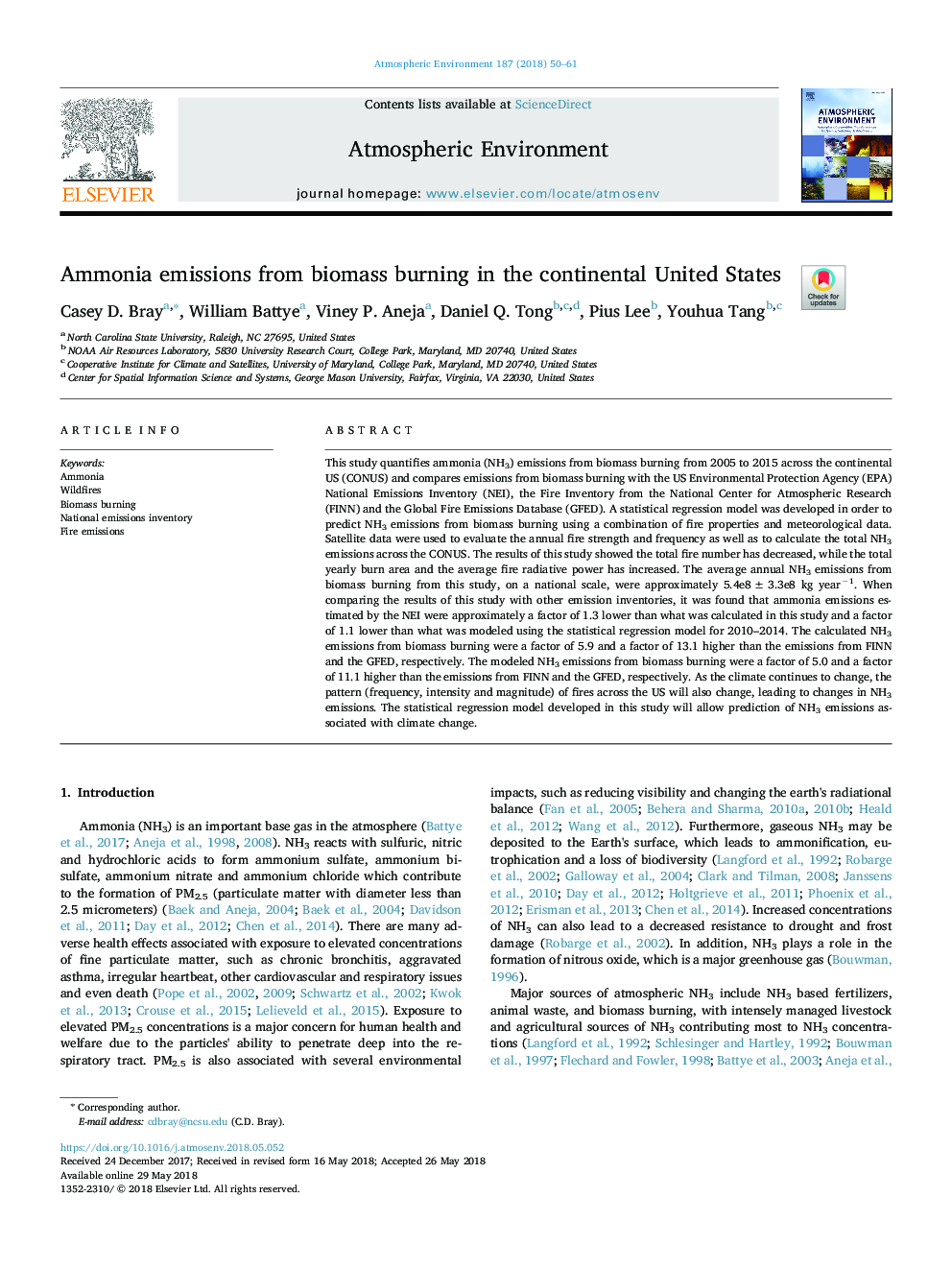| کد مقاله | کد نشریه | سال انتشار | مقاله انگلیسی | نسخه تمام متن |
|---|---|---|---|---|
| 8863597 | 1620287 | 2018 | 12 صفحه PDF | دانلود رایگان |
عنوان انگلیسی مقاله ISI
Ammonia emissions from biomass burning in the continental United States
ترجمه فارسی عنوان
انتشار آمونیاک از سوختن زیست توده در ایالات متحده قاره
دانلود مقاله + سفارش ترجمه
دانلود مقاله ISI انگلیسی
رایگان برای ایرانیان
کلمات کلیدی
موضوعات مرتبط
مهندسی و علوم پایه
علوم زمین و سیارات
علم هواشناسی
چکیده انگلیسی
This study quantifies ammonia (NH3) emissions from biomass burning from 2005 to 2015 across the continental US (CONUS) and compares emissions from biomass burning with the US Environmental Protection Agency (EPA) National Emissions Inventory (NEI), the Fire Inventory from the National Center for Atmospheric Research (FINN) and the Global Fire Emissions Database (GFED). A statistical regression model was developed in order to predict NH3 emissions from biomass burning using a combination of fire properties and meteorological data. Satellite data were used to evaluate the annual fire strength and frequency as well as to calculate the total NH3 emissions across the CONUS. The results of this study showed the total fire number has decreased, while the total yearly burn area and the average fire radiative power has increased. The average annual NH3 emissions from biomass burning from this study, on a national scale, were approximately 5.4e8 ± 3.3e8 kg yearâ1. When comparing the results of this study with other emission inventories, it was found that ammonia emissions estimated by the NEI were approximately a factor of 1.3 lower than what was calculated in this study and a factor of 1.1 lower than what was modeled using the statistical regression model for 2010-2014. The calculated NH3 emissions from biomass burning were a factor of 5.9 and a factor of 13.1 higher than the emissions from FINN and the GFED, respectively. The modeled NH3 emissions from biomass burning were a factor of 5.0 and a factor of 11.1 higher than the emissions from FINN and the GFED, respectively. As the climate continues to change, the pattern (frequency, intensity and magnitude) of fires across the US will also change, leading to changes in NH3 emissions. The statistical regression model developed in this study will allow prediction of NH3 emissions associated with climate change.
ناشر
Database: Elsevier - ScienceDirect (ساینس دایرکت)
Journal: Atmospheric Environment - Volume 187, August 2018, Pages 50-61
Journal: Atmospheric Environment - Volume 187, August 2018, Pages 50-61
نویسندگان
Casey D. Bray, William Battye, Viney P. Aneja, Daniel Q. Tong, Pius Lee, Youhua Tang,
